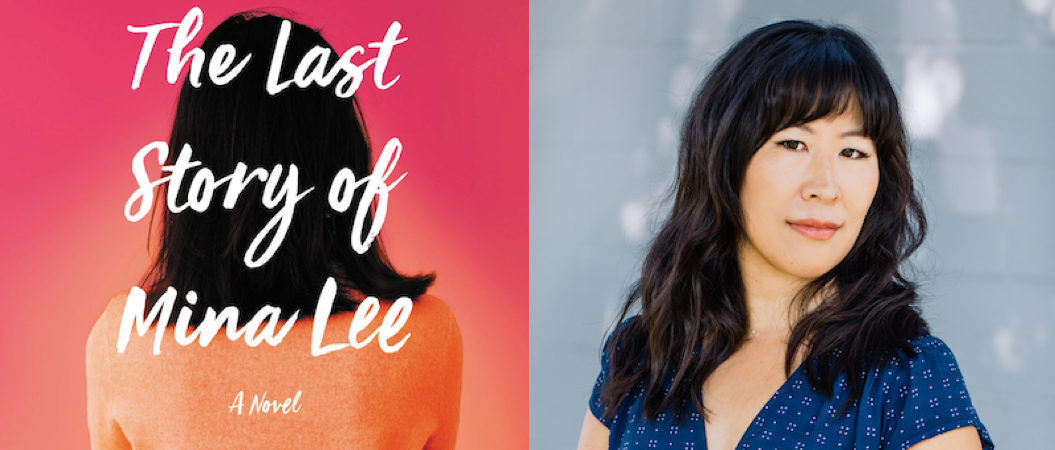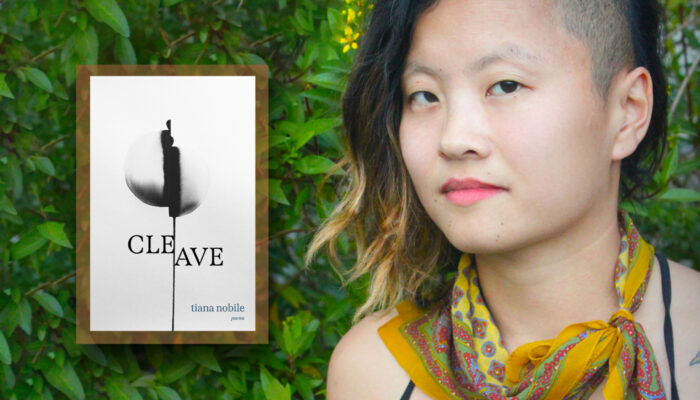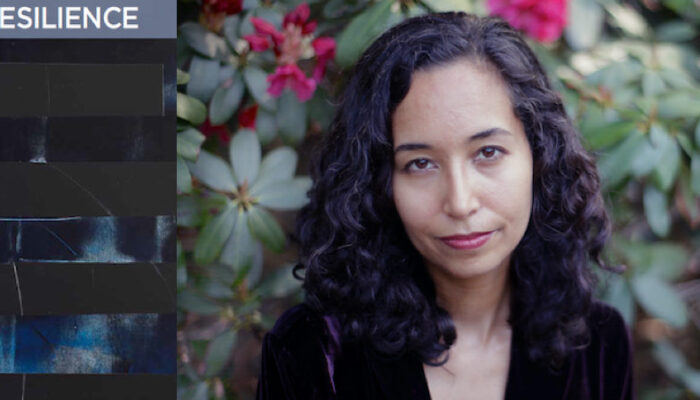An Interview with Nancy Jooyoun Kim
The Last Story of Mina Lee was the last novel I read before giving birth to my first child. During a pandemic, no less. As I prepared for motherhood, I became enraptured in the story of mother Mina and daughter Margot Lee, who are separated by language and cultural divides. At the same time, these characters made me think of my relationship with my own mother—the painful and joyful connections we shared.
Nancy Jooyoun Kim’s debut novel alternates between Mina’s story of immigration to America in 1987 and Margot’s story of searching for the truth after finding her mother unexpectedly dead in the small Los Angeles apartment they once shared. How did Mina die? Who was she last seen with? Was she murdered?
The novel broadens beyond these questions too. Kim artfully describes Margot’s experience growing up as a working-class Asian-American in the United States. She shows Los Angeles Koreatown’s diverse landscape and complicated history with the LA race riots, and asks the readers to question our country’s capitalistic values, our borders, and our racial hierarchies.
Over the course of a few hours, Nancy and I chatted over Google Hangouts about narrative structure, impossible conversations, writing out of stereotype, diversity (and the lack thereof) in publishing, and more. The Last Story of Mina Lee publishes on September 1, 2020 from Park Row Books. You can order a copy from Bookshop.org, your local independent bookstore, or anywhere else that sells books.
—Crystal Hana Kim
Crystal Hana Kim: The Last Story of Mina Lee alternates between two timelines—Mina’s story of being a new immigrant in Los Angeles’ Koreatown in 1987 and Margot’s story of finding her mother’s dead body in 2014. How did you decide on this structure?
Nancy Jooyoun Kim: The novel began with this image of the daughter Margot in Seattle trying to reach her mother Mina in Los Angeles who won’t pick up the phone. I imagined how complicated her emotional and psychological state would be. Margot is frightened, fearful, and frustrated. “Why won’t mom pick up the phone?” But also as a woman who has in many ways tried to escape her past, her family, to submerge her identity because much of it is so painful, so full of sadness and regret, she is also, beneath all her dread, strangely and guiltily feeling a glimmer of freedom, or maybe relief. So for me the structure of this novel is a reflection of an impossible conversation, the impossible conversation between a mother and daughter who have struggled all their lives to understand each other. The two storylines, alternating, are a dialogue, between the past and present, mother and daughter, that is impossible in real life. Margot never knows or understands the fullness of her mother’s story. Only we as readers do. And I find that really fascinating.
CHK: That is a beautiful explanation. As a reader, this dialogue across time resonated with me deeply. There’s so much Margot will never know about her mother’s life, and there’s so much Mina left unsaid before her early death. I’d love to hear about your own timeline. When did you start this novel and what was the writing process like?
NJK: Margot was originally the protagonist of a short story that I wrote in 2008. It was a typical sort of bored-millennial-trapped-in-an office story. There was a love affair with a coworker named Jonathan. But the complex mother-daughter relationship was very much submerged in the story. I realized years later, in 2011, that THAT was the story I needed to tell. Margot dreads her check-ins with her mother who asks lots of questions and worries a lot. Because Margot and her mother speak different languages (Margot understands a fair amount of conversational Korean but can’t always respond while her mother only understands and speaks a little English), there is so much frustration, so much unsaid between the two, which becomes more frustrating, as Margot is in her twenties, and has difficulty explaining to her mother the choices she makes in life. Then in 2014, I had the opportunity to quit my full-time job. I finally had a chance to really focus on writing this book, to sit with and explore what frightened me the most—losing my mother without a chance to fully explain how much she means to me.
CHK: The language barrier between Margot and Mina is a source of frustration for them both. I think many readers who are the children of immigrants will connect with this feeling. Did this theme of communication (and what can be lost between two languages) develop even further once you had time to work full-time on the novel? Did this theme change as you wrote?
NJK: I realized that, whether the differences in language are literal or not, what is lost in communication can sometimes live in the distances between people and can still be partially recovered when one takes the time to look hard enough into those silences, into the spaces between us. For example, so much is lost between Margot and Mina in life, yet after Mina dies, the artifacts of her existence slowly change the cramped apartment in Margot’s mind into a space that is rich with memories and meaning. The objects of Mina’s life, which Margot is tasked with clearing, speak to her now because it’s the first time in her life when she’s had the time to really listen and interpret their meaning. While writing this book, I came to terms with the fact that loss, in language and in life, is inevitable, but what matters most is the intention behind the words, the intention behind that life, and without spoiling the end of the book, that’s what I tried to capture.
CHK: I think you’ve certainly captured that intention, and I’m eager for readers to discover that thread for themselves. I’d love to talk more about the writing process. What were some of your personal, historical, and/or literary inspirations for this book?
NJK: I’m very much inspired by writers who are relentless in their honesty, unafraid of both the brutal and the beautiful in everyday life. (I guess, I’m kind of intense?) I think often of James Baldwin’s novels, in particular Another Country and Giovanni’s Room, Elena Ferrante’s Neapolitan novels, Han Kang’s The Vegetarian and Human Acts. These are books that render life—the complications, the hardships, the tenderness and vulnerability—in such exquisite and haunting ways. In my writing, I’m also pulling a lot from my own memories, the stories that circulated around me within the immigrant communities that raised me while growing up. I was a fairly quiet kid so I listened and read a lot.
CHK: Did you grow up in LA? I ask because place has such an important presence in your novel. LA’s Koreatown is so vividly and precisely portrayed. You not only use this location to immerse us in the narrative, but also to examine racial and socioeconomic stratifications.
NJK: Yes, I was born and raised in Los Angeles, just outside of Koreatown. For me, it was extraordinarily important to write the setting of this book in a way that challenges mainstream narratives about ethnic enclaves. Places like Koreatown, or really any neighborhood with a high concentration of people of color, are often represented as locations of seediness and crime for white protagonists or audiences to “visit.” Koreatown is often stereotypically imagined as places to “eat and consume the other” rather than live. I wanted to describe the Koreatown that I know and love—a community that exists because immigrants need it so desperately to exist, a community that offers a space for our elderly to get together, a community that offers language classes to children, a community that provides some of the only economic opportunities for immigrants to survive. It is a complex space, full of both life and death, that reflects sometimes the messy social and economic hierarchies of the larger society, but it is most valuable to the immigrants who built it to get by.
CHK: One of my favorite aspects of your novel was exactly this—the way you challenged the general depiction and reputation of LA’s Koreatown. Overall, I was impressed with how you tucked in so many real (and often marginalized or stereotyped) experiences—what it’s like to be an immigrant, working class life in LA, inherited trauma, the barriers women face at home and in the workplace, and the diverse racial makeup of LA.
Margot is constantly questioning the state of the world: “How did the world become a place where jobs and wealth were so concentrated? Why did borders define opportunity? Was it that bad for her mother in Korea? Was she more trapped there than here?” The Last Story of Mina Lee is a book for our times. Can you tell me more about your decision to weave in these experiences and questions throughout the narrative?
NJK: While writing this book, I’m not sure if it was a decision or just the result of what made sense to me for this story and this character, Margot, who is very smart, observational, a bit jaded, emotional yet also in a kind of dissociative state from the trauma of discovering her mother’s body, her mother’s death. But as a writer who is very much aware of what is going on in the world, very frustrated, and many times left with a feeling of helplessness as a human being, I wanted to write a story that captures the sense of entrapment that I and many others, in particular immigrants and people of color, are experiencing right now. Also, especially because of the pandemic and this looming sense of the end times, a need for revolution, etc., it is time to ask the questions that nobody wants to ask. And it’s time to shape our own answers as well.
CHK: I 100% agree with you. I think it’s important for us to ask these questions of the publishing world as well. We here at Apogee are dedicated to providing a platform for marginalized writers. In general though, the publishing word is very white and homogenous. I do think discussions about the necessity of diversity in publishing are happening now, but I’m more eager to see actual change. What was the publication process like for you? Did you experience any obstacles because of your identity or because of the content of your novel?
NJK: I love Apogee and I’m so impressed by you and all the editors and writers who have worked as a community to build this tremendous platform. Apogee was one of the first places to publish my work and I think that says a lot about both the journal and the publishing industry in general. After I graduated from an MFA in 2006, I spent about seven to eight years after that with, I think, a 100% rejection rate. I’m talking about journals, residencies, everything. During that time, I wrote another novel that received over 20 rejections from editors at publishing houses. Sure, part of all the rejection that I experienced might’ve been due to the quality of my writing, but I was also told that people weren’t sure how to “market my work,” or that my work wasn’t this enough, or that enough, comparing me to other authors. This is actually a familiar story that we have all heard before from writers of color. Right now, the publishing industry seeks more diversity, but of course, this is a large industry and change happens slowly. I am fortunate to have an agent and editor who are tremendous advocates and highly-collaborative in our work. This has been a blessing. But I wonder about all the writers who can’t or couldn’t find a way into this industry, particularly writers of color, because they had been told over and over again, in different ways, that there was no audience for their work. This is a lie. And it is heartbreaking to think about. There has been much damage that has already been done, some of this damage is irreparable. I think the industry has to think not only about “diversity for diversity’s sake” but it will have to take a hard look at itself, like many of us right now, to find ways to truly reimagine what our world can look like, what kinds of stories we tell and share widely, and how and why we compensate certain types of stories more than others.
CHK: Thank you for your honesty, Nancy. I think sharing these ‘behind-the-scenes’ stories can help to keep the publishing world accountable while also giving hope to emerging writers. Not only is there an audience, but that audience is starved and eager for work like yours. I could talk about this all day, but I want to be respectful of your time.
2020 has been a such difficult, bleak year. I imagine it’s a challenging time to publish. Still, I think it’s important to celebrate. You just published your debut novel! That’s a major accomplishment. What are you most looking forward to in publishing this novel?
NJK: Thank you so much, Crystal. I am most looking forward to hearing how readers connect with this book which I have been working on in isolation for so many years. I’m still pinching myself and can’t believe that I have the opportunity to share Mina and Margot’s story with the world. I wrote this book because I absolutely had to—personally and artistically—and I never imagined that people would be so interested in it as well. I am so honored to have this experience.
Born and raised in Los Angeles, Nancy Jooyoun Kim is a graduate of UCLA and the University of Washington, Seattle. Her essays and short fiction have appeared in the Los Angeles Review of Books, Guernica, NPR/PRI’s Selected Shorts, The Rumpus, Electric Literature, Asian American Writers’ Workshop’s The Margins, The Offing, and elsewhere. The Last Story of Mina Lee is her first novel.
Crystal Hana Kim’s debut novel If You Leave Me was named a best book of 2018 by multiple outlets, including The Washington Post, Booklist, Literary Hub, and Nylon. It was also longlisted for the Center for Fiction Novel Prize. Kim was a 2017 PEN America Dau Short Story Prize winner and has received scholarships from the Bread Loaf Writers’ Conference, Sewanee Writers’ Conference, Hedgebrook, and Jentel, among others. Her work has been published in Elle Magazine, The Paris Review, Guernica, and elsewhere. She currently teaches at Columbia University and is a contributing editor at Apogee Journal.




